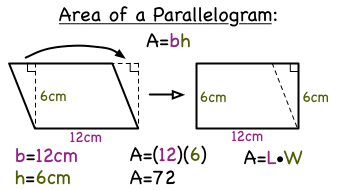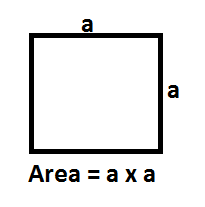Calculating the area of 2D shapes involves understanding the space they occupy on a flat surface. For rectangles, the area is found by multiplying the length (L) by the width (W), with the formula area = L × W, reflecting the concept of stacking rows of width W to cover length L. Squares, where all sides are equal, have an area formula of area = S², signifying that space within a square is side length (S) multiplied by itself. Parallelograms also use a similar formula to rectangles, area = base (B) × height (H), representing the base length times the distance from the base to the opposite side, capturing the space enclosed while accounting for the slanted sides unique to parallelograms. In summary, the area of rectangles is length × width, the area of squares is side length squared, and the area of parallelograms is similar to that of a rectangle: base multiplied by height.



